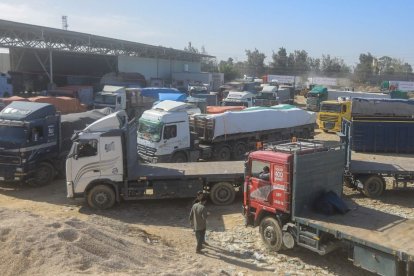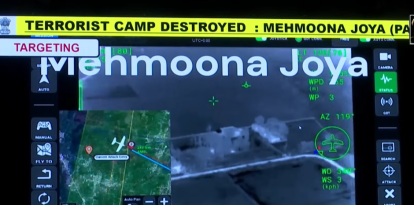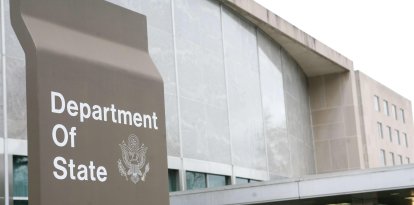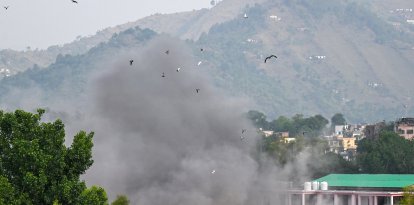Experts warn of the danger of installing a temporary US port off the coast of Gaza
The Biden administration intends to build a floating pier to help Palestinian civilians. However, military experts say U.S. troops could be the targets of terrorist attacks.

Varios camiones de ayuda humanitaria en Gaza. (Cordon Press)
Military experts have warned about the great risk to American soldiers posed by a floating pier that the United States intends to build off the coast of Gaza, a plan announced by President Joe Biden during his State of the Union address on March 7 of this year.
The Biden administration's goal is to use the pier to provide food and supplies to Palestinians amid the war between Israel and the Hamas terrorist group. But some military specialists expressed serious concerns about the safety of U.S. troops.
The Biden administration's plan to install a floating pier off the coast of Gaza as part of a broad international initiative to supply food to the Palestinians could endanger U.S. troops, experts say. They will have to build, operate and defend the structure from attacks. The pier implies a risk with enormous political consequences for the president in the event of a terrorist incident.
While the Pentagon maintains that no U.S. troops will be deployed to Gaza, it has revealed little information about how long the mission could last and how it intends to ensure the safety of those involved.
A target for Hamas and other Palestinian terrorist groups
Experts noted that the pier will be an attractive target for Hamas and other Palestinian terrorist organizations, as it will make it easier for them to attack the United States, a strong ally of Israel.
Attacks on the port could occur in various ways: rocket fire, drone launches, or sending divers or fast boats carrying explosives, among other threats, the experts added.
Paul Kennedy, a retired Marine general who was in charge of humanitarian missions after natural disasters in Nepal and the Philippines, calls it a “worthy goal” to help civilians in Gaza. However, he maintained that the U.S. military should not participate in the operation. “If a bomb went off in that location ... the American public will ask, ‘What the hell were they doing there in the first place?’” Kennedy said.
Learning from the past
Some of the experts even recalled the disasters that have occurred in the past when U.S. forces were deployed in hostile areas.
One of those tragic events occurred in Beirut, Lebanon, in 1983, when deadly terrorist attacks killed 241 soldiers.
Another incident mentioned by experts was the chaotic withdrawal from Afghanistan in 2021, which left 13 U.S. troops dead.
How would delivering aid to the Palestinians work?
Recently, U.S. Department of Defense Press Secretary Patrick Ryder provided details regarding how the administration plans to send humanitarian aid to Gaza.
“Simply put, they'll establish a temporary offshore maritime pier that allows for shipping vessels to transfer cargo to smaller vessels to transport and offload cargo to a temporary causeway for the delivery of humanitarian aid to Gaza,” he said.
“Importantly, there will be no U.S. forces on the ground in Gaza. And as for aid distribution, we'll have more details in the future, but we are coordinating with ally and partner nations, the U.N. and humanitarian NGOs on the way ahead for distribution of assistance into Gaza,” Ryder added.
The military officer concluded that “in terms of timing, we're working to set this up as quickly as possible, but we expect that it will take several weeks to plan and execute. Once operational, the actual amount of aid delivered will depend on many variables, and will likely scale over time. However, we expect that deliveries via JLOTS could provide more than two million meals to the citizens of Gaza per day.”
Will the pier be useful?
According to U.S. officials, 120 trucks arrive each day at the "safe humanitarian zone" in Gaza, but at least 480 are needed to meet the needs of civilians in the Gaza Strip. Therefore, it would be an extremely complex task to unload 360 truckloads per day from a temporary port.
As in so many cases, the lack of food and supplies is caused by safety issues in the area.
According to a U.S. official, the main problem is not getting aid trucks to Gaza, but distributing it within the strip, mainly because the convoys, without police escort, are now targets of criminal gangs. Officials also blamed Hamas for placing military targets among civilians.
RECOMMENDATION





















